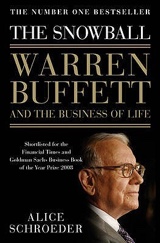 I am currently reading The Snowball: Warren Buffett and the Business of Life by Alice Schroeder. As an authorized biography of Warren Buffett intended for the general public and not a book specifically about investing per se, I think that so far it is excellent. I have only recently started learning more about Buffett, but he is certainly an intriguing person. Schroeder is an excellent writer, and provides both detail and insight into his life as well as does a especially good job of explaining the financial aspects of his activities.
I am currently reading The Snowball: Warren Buffett and the Business of Life by Alice Schroeder. As an authorized biography of Warren Buffett intended for the general public and not a book specifically about investing per se, I think that so far it is excellent. I have only recently started learning more about Buffett, but he is certainly an intriguing person. Schroeder is an excellent writer, and provides both detail and insight into his life as well as does a especially good job of explaining the financial aspects of his activities.
Here are some of the notes that I took while reading the book so far, covering his early years:
- The Snowball title is a metaphor. “Life is like a snowball. The important thing is finding wet snow and a really long hill” How did Buffett’s portfolio grow so big? He started early, and with relentless focus came the power of compounding returns. (He specifically states that credit card debt is a huge obstacle in starting your own snowball!)
- As a teenager, why did Warren want money? A quote from Buffet:
It could make me independent. Then I could do what I wanted to do with my life. And the biggest thing I wanted to do was work for myself. I didn’t want other people directing me. The idea of doing what I wanted to do every day was important to me.
A amazingly common sentiment among those that end up very rich. Independence, not money, as the primary goal.
- Since he felt socially awkward growing up, he was inspired by Dale Carnegie’s now-famous book How to Win Friends and Influence People. Here are some of the rules that he took upon himself to follow:
Everyone wants attention and admiration. Nobody wants to be criticized.
The sweetest sound in the English language is the sound of a person’s own name.
The only way to get the best of an argument is to avoid it.
If you are wrong, admit it quickly and emphatically.
Ask questions instead of giving direct orders.
Give the other person a fine reputation to live up to.
Call attention to people’s mistakes indirectly. Let the other person save face. - By the time he was 16 years old, Warren Buffett had saved up $5,000. This was primarily through delivering over 500,000 newspapers, along with other small enterprises. If adjusted for inflation, $5,000 at that time would be the equivalent of $53,000 in 2007. Talk about a head start for that snowball.
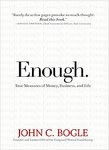 John Bogle is the founder of the Vanguard Mutual Fund Group, and the creator of the first index fund. Reading his latest book
John Bogle is the founder of the Vanguard Mutual Fund Group, and the creator of the first index fund. Reading his latest book 
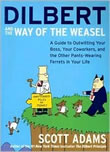 The story goes that Scott Adams wanted to publish this as a one-page book, but he couldn’t find a publisher to do it. In fact, he is quoted as saying that “if God materialized on earth and wrote the secret of the universe on one page, he wouldn’t be able to find a publisher” either on CBS Marketwatch. Instead, he weaved it into a Dilbert cartoon-based book called
The story goes that Scott Adams wanted to publish this as a one-page book, but he couldn’t find a publisher to do it. In fact, he is quoted as saying that “if God materialized on earth and wrote the secret of the universe on one page, he wouldn’t be able to find a publisher” either on CBS Marketwatch. Instead, he weaved it into a Dilbert cartoon-based book called 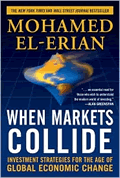
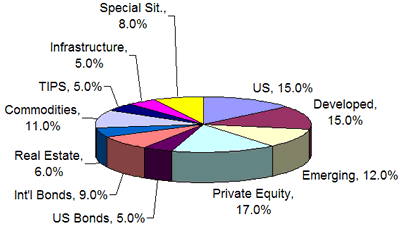
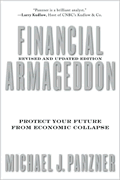
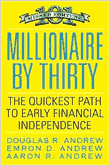
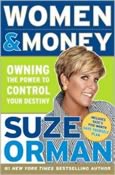
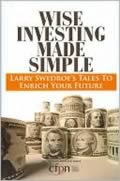
 (
(


 The Best Credit Card Bonus Offers – November 2024
The Best Credit Card Bonus Offers – November 2024 Big List of Free Stocks from Brokerage Apps
Big List of Free Stocks from Brokerage Apps Best Interest Rates on Cash - November 2024
Best Interest Rates on Cash - November 2024 Free Credit Scores x 3 + Free Credit Monitoring
Free Credit Scores x 3 + Free Credit Monitoring Best No Fee 0% APR Balance Transfer Offers
Best No Fee 0% APR Balance Transfer Offers Little-Known Cellular Data Plans That Can Save Big Money
Little-Known Cellular Data Plans That Can Save Big Money How To Haggle Your Cable or Direct TV Bill
How To Haggle Your Cable or Direct TV Bill Big List of Free Consumer Data Reports (Credit, Rent, Work)
Big List of Free Consumer Data Reports (Credit, Rent, Work)